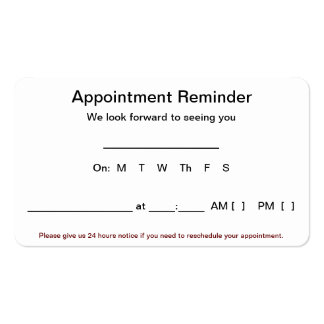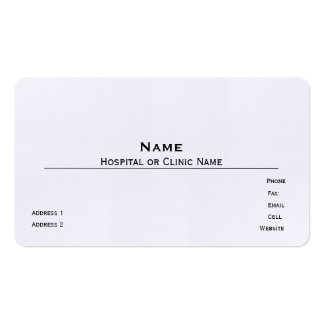Businesses advertise online. A lot.
But a vast majority of businesses don’t advertise well. At least, not as well as they could.
Usually, the trouble is a hard focus on getting traffic to a website, when instead, they should focus on conversions.
If you’ve invested in bringing traffic to your site, you’ve either brought interested visitors, or accidental visitors. Which is it? Your conversion rate will tell you the answer. You can’t just invest in driving traffic, you must also invest in converting that traffic.
Conversion optimization is typically two things:
1. Targeting the right customers.
2. Optimizing your site for conversions.
Optimizing your site for conversions is its own beast, and it ought to come before anything else. You don’t want traffic if your site isn’t ready.
But if you’ve already optimized your site for conversions, it’s time to get serious about the traffic you bring in.
When targeting the right traffic audience for your website, there are three general phases: creating customer personas, mapping the customer journey and serving up your optimized content.
Creating Customer Personas
If you’ve spent any time with a marketer, you’ve probably heard about personas. These are the fake people that companies invent to serve as a sort of “template” for their typical customer. Your marketing efforts target specific personas (and, hopefully, so does your website).
The more detailed and in-depth the personas a company creates, the more accurately it can target customers. When you know what the customer is like, you can map his/her journey from finding your site to converting into a lead or a sale.
Basic demographics like age, gender and geography can tell quite a lot. But these are very broad and the “story” you invent for their journey could be completely wrong. Details like income (can they afford you?), interests (what else do they like?), in-market affinity (what are they shopping for?) and more can help you create the right path.
Psychographics and emotional demographics help you go even further. Psychographics are your customers’ attitudes, aspirations and other psychological criteria. These play into broader demographic details nicely and can really start to tell you how they will turn into a customer.
Emotional demographics are usually very temporary conditions in which your customer would make a purchase. Snickers’ ads are a perfectly-honed example. Their emotional demographic is “hungry and angry (a.k.a. hangry).” This is the perfect time for their product, a candy bar of significant sugar and protein density. Their candy bar will temporarily relieve the temporary symptoms, and the company plays this message beautifully.
Personas are as important as anything when laying out your initial strategy. When you know your customer personas well, you can begin to engage them smartly. The importance cannot be overstated.
How to Use Google Analytics to Get Started
Set your segment to a specific traffic source instead of all traffic to see your current organic search strengths and weaknesses.
Note: Organic traffic is important to look at, of course, but for any business investing in advertising, paid traffic is actually much more important—the primary reason being that it is paid traffic. Specific budgets are dedicated to paid traffic, and it’s more directly attributable to the conversion of said traffic and your content. In other words: its ROI is clearer.
In Google Analytics Reporting, under Audience, you’ll find:
• Demographics: Age, Gender. You can see your basics: age and gender. These things mean different things depending on your industry.
• Interests: Affinity Categories, In-Market Segments; Other Categories for additional insights. Here you can get a sense of the personality and interests of your current traffic.
• Geo: Location. Use this to figure out where your conversions come from and if you’re attracting the right local customers or not.
• Mobile: Overview (Mobile, Tablet vs. Desktop). Look at conversions by device category. If mobile devices produce fewer visits but show a higher rate of conversion, you can infer that more effort to reach visitors on mobile phones would be worth your company’s time and money.
Google has adopted a mobile-first attitude and has been making subtle changes to reflect that. (Not all websites will reflect that mobile has taken over desktop, but in general, it has.)
Under Acquisition, you’ll find:
• Search Engine Optimization: Queries This requires connection to Google Search Console—if you haven’t done that yet, go ahead and do it.
• AdWords: Keywords: These will give you a sense of the types of queries users are typing when they click your paid ads. It’s a pretty good hint of what they’re truly interested in when they view your landing page content.
• Campaigns: Paid Keywords. This can give you some more insight on interests, especially if you don’t use Google AdWords for your PPC. If you haven’t already explored alternative online advertising networks, it may be worth your while.
Under Behavior…
• See Site Content: All Pages. Sort by Bounce Rate to see which pages have the lowest bounce rate.
These should help springboard you to creating your customer personas and should also help you prioritize your efforts when it comes to targeting with digital marketing. Remember, you know your own customers better than anyone, but objective data is important to consider. If objective data doesn’t match your ideal customers, you’ll need to make some adjustments…
Mapping the Customer Journey
Ignoring your existing content for a second, how does your highly-detailed persona go from discovery to customer? What are the steps along the way? What is high-funnel? Mid-funnel? Low-funnel?
If you can answer these questions, then you know what content you need to create.
Of course, that’s easier said than done…
And since “content” can actually take many forms, your content strategy should take into
consideration your methods of getting that content seen. Will you buy paid ads? Are you leaning on search engine optimization? Is social media your biggest traffic driver? And how about e-mail, that best-converting channel of all?
Think like a chef in a nice restaurant. You need a good appetizer, a delectable main course, and of course, you should always offer a dessert. But restaurant patrons don’t just stand in the kitchen with their hands out – you need to plate that food appropriately, serve it at the right time, and make sure it’s fresh.
Serving Up Your Content
With so many channels to choose and so many ad networks out there, digital marketing can feel like you’re trying to build a car from a warehouse full of parts. It’s daunting to say the least.
Having your customer personas will help you narrow your focus, and help you understand what you need to build. Most companies can’t afford all the options. You have to be choosy.
When you choose the paid ad route, you have to be as sharp as possible. If you’re not careful, you’ll spend a lot of money on entirely the wrong customers.
• Personas inform your keyword research, which in turn influences your content, which becomes (for many customers) the first impression of your company.
• Ad copy matters a great deal — not just for keeping bids optimized, but for improving conversion rates, too. Proper expectation setting begins with the ad copy.
Google tries to provide the most relevant possible search results when someone is looking for something. If you offer what someone is looking for, it’s your job to provide the most relevant possible content. You do that by determining what content they need for that stage of the journey.
When you get your content to a customer seeking what you offer, at the time when they seek it, at the appropriate stage in their buying cycle, your conversion rates will improve dramatically. You’ll also develop brand awareness and build your authority as the right company for the job.
It’s not about being at the right place at the right time – it’s about being in the right place ALL the time. So create the right content, and put it in the right place. If you do this, all your advertising dollars will be put toward bringing interested traffic instead of accidental traffic.








No comments:
Post a Comment